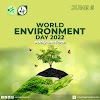It has been an enlightening month indeed on the subject of Nature Conservation. We had conversations on what it means, why it is important to biodiversity and the various forms it takes.
Today, we draw the curtains on our discourse on Nature Conservation with practicals steps towards achieving it.
Here are the most common methods of managing and protecting the natural environment for the benefit of the present and future generation.
1. Establishing protected areas
Protected areas are areas of land or water that are put aside for conservation reasons. These areas are legally protected from development and other activities that could harm the environment. Protected areas can be national parks, nature reserves, wildlife sanctuaries, and many others. Usually, these are provided by the government and private organizations.
2. Sustainable development
This is the act of meeting the needs of the present without affecting the ability of future generations to meet their own needs.
In other words, it is using resources in a way that does not exhaust them and that does not harm the environment. Sustainable development can be achieved through practices such as using renewable energy sources (solar, wind energy), reducing waste, and conserving water.
3. Reducing pollution
Pollution can have a devastating impact on the natural environment. It can make our air, water, and soil unsafe. Pollution can harm wildlife and has been proven to be a contributing factor to some terminal diseases in humans. Reducing pollution can help to protect the environment and improve the health of people and animals.
4. Education and awareness
By enlightening people about the value of the natural environment, we can help to create a more sustainable future.
Education and awareness can be achieved through activities such as school programs, public outreach events, and social media campaigns. An example is the #SeasonsGreenThings campaign organized by Plogging Nigeria every December to spread the gospel of sustainability.
1️⃣2️⃣/1️⃣4️⃣
— Plogging Nigeria (@ploggingnigeria) January 2, 2023
❌⬇️🔄♻️
Still in the euphoria of the new year, today's Green Card has a simple, yet important message. It may be inevitable to generate zero waste throughout the year, but you sure can cut down on your waste generation drastically. #14GreenCards#SeasonsGreenThings pic.twitter.com/Kuw7HKdHqc
5. Research and monitoring
By conducting research and monitoring, we can develop better conservation strategies and track the progress of conservation efforts. Research and monitoring is usually conducted by government agencies, non-governmental organizations, and academic institutions.
The conservation methods above require a collective effort from government agencies, private organizations, and communities.
But here are a few things you can do individually to facilitate conservation:
1. Recycling and Upcycling
Your waste products can be broken down to produce something else entirely - Recycling. Or you can simply find another use for your waste item - Upcycling.
Both methods would help to decrease waste products and the overuse of natural resources.
2. Sustainable consumption habits
Changing our consumption habits can make a lot of difference for the environment. For example, you can choose to buy products that are made from sustainable materials or produced in an eco-friendly way. If we all take up this habit, it would encourage our industries to be ethical in production and their use of resources.
3. Conserving water and energy
Water is a precious resource and must be conserved wisely. Take shorter showers, and turn off your tap while brushing or when not in use. Remember to also turn off your electrical appliances when they are not in use.
4. Planting trees
Planting trees helps to improve air quality, reduce pollution, reduce erosion, and provide habitats for wildlife. Plant a tree today.
5. Volunteering
You can do even more by volunteering for conservation campaigns in your community or joining organizations that spread awareness.
It is not enough to know these things yourself, educate your family, friends, and people close to you on the importance of conserving nature.
Nature conservation is everyone's responsibility. By taking small steps like these in our daily lives, we can make a big difference for the planet.
— Fiyinfoluwa Bamgbose











.jpeg)






0 Comments